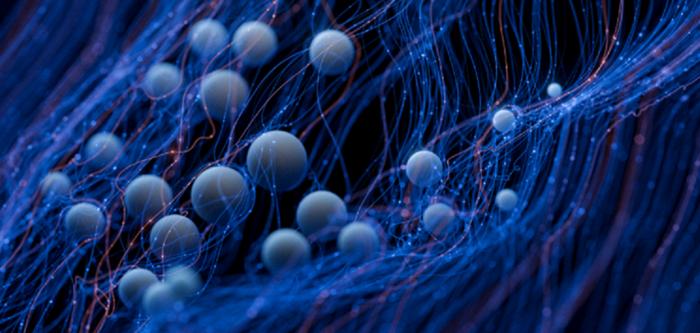As the intricate process of embryonic development unfolds, the mechanism by which cells communicate and migrate plays a crucial role in shaping the organism. New insights from recent research shed light on the significance of bioelectric signals in directing collective cell migration, particularly in the context of neural crest development. This discovery marks a significant advancement in our understanding of the interplay between electrical cues and cellular behavior.
Dr. Elias H. Barriga and his team have made notable strides in identifying the role of bioelectricity in guiding the migration of neural crest cells during embryogenesis. The neural crest is an essential group of cells that contributes to various structures, including craniofacial bones and components of the nervous system. The researchers have characterized an endogenous bioelectric current pattern that resembles an electric field, which appears to play a fundamental role in directing the movement of these cells within the embryo.
The research begins by delving into the properties of bioelectric fields and their potential as a directional cue for migrating cells. Past studies primarily focused on cell behavior in controlled laboratory settings, making the translation of these findings to live embryos challenging. However, Barriga’s work provides compelling evidence that, much like traffic signals direct vehicles, electric fields can influence the paths taken by neural crest cells as they migrate through the developing embryo.
Central to this phenomenon is the process of electrotaxis, wherein cells navigate through electric fields generated internal to the embryo. This ability allows cells to respond to their environment actively, enhancing our understanding of cellular dynamics during development. The research team discovered that neural crest cells are equipped to sense these electric currents, leading to coordinated movement in response to the directional cues provided by the bioelectric fields.
A pivotal aspect of Barriga’s findings involves a specific enzyme known as voltage-sensitive phosphatase 1 (Vsp1). This enzyme was identified as a critical player in the electrotaxis process. The researchers created a defective version of Vsp1, aiming to determine its role in guiding the directional migration of neural crest cells. The results were illuminating; cells deficient in functional Vsp1 exhibited impaired collective electrotaxis, underscoring the enzyme’s significance in mediating the response to bioelectric signals.
Interestingly, the role of Vsp1 diverged from expectations. Instead of being directly involved in the locomotion of cells, it appeared to transform electric gradient cues into migratory signals. This distinction is vital for understanding the mechanisms of cellular navigation and highlights Vsp1’s unique function as a sensor and transducer of bioelectric signals.
Furthermore, the researchers explored how these electric fields are generated within the developing embryo. It was posited that the stretching of a region called the neural fold leads to the activation of specific ion channels, which in turn create voltage gradients. This mechanism provides insights into the dynamic interplay between cellular stretching and electric field formation, emphasizing the role of mechanical factors in shaping bioelectric landscapes.
Barriga’s study presents groundbreaking evidence that electric fields emerge precisely along the trajectories that neural crest cells follow during migration. This finding not only advances the field of developmental biology but also opens up new avenues for research. By elucidating the electrical signaling pathways that guide cellular behavior, scientists can begin to explore their implications in tissue morphogenesis and regeneration.
As developmental biology continues to evolve, the integration of bioelectricity into the traditional framework of chemical and mechanical cues presents new challenges and opportunities. The research conducted by Barriga and his team serves as a timely reminder of the complexities involved in embryonic development and emphasizes the need for further exploration into the role of electric fields in cellular behavior.
The implications of this research extend beyond the realm of embryogenesis. The mechanisms that guide neural crest cell migration may also provide insights into processes such as wound healing and tumor progression. For instance, understanding how electric fields influence cell movement could lead to innovative strategies for enhancing tissue repair or developing targeted cancer therapies.
In conclusion, Dr. Barriga and his collaborators have successfully bridged critical gaps in our understanding of bioelectricity’s role in development. Their findings offer a remarkable perspective on how the physical laws governing electric fields can shape biological processes at the cellular level. The dialogue between electrical cues and cellular dynamics promises to redefine our understanding of life itself and could inspire a new generation of research aimed at harnessing these processes in biomedical applications.
By advancing our grasp of electrotaxis within living organisms, this work not only enriches the field of developmental biology but also underscores the potential for future discoveries that may emerge from studying the intersection of physics and biology. In this ongoing renaissance of bioelectricity research, the quest to unravel the mysteries of living systems has only just begun.
Subject of Research: Cells
Article Title: Electric Fields as Directional Cues in Embryonic Cell Migration
News Publication Date: 17-Jan-2025
Web References: Nature Materials DOI Link
References: Nature Materials, DOI: 10.1038/s41563-024-02060-2
Image Credits: Julien Marcetteau for the Barriga Lab/PoL
Keywords: Bioelectricity, Electrotaxis, Neural Crest, Embryonic Development, Cell Migration, Voltage-sensitive Phosphatase, Mechanotransduction.





